Off to Sea
ABOARD THE USCGC HEALY, ON THE BEAUFORT SEA– Travel has many pleasures, but as everyone knows, can involve the unexpected. If you are traveling from Barrow, Alaska, out to meet a ship like the Coast Guard icebreaker HEALY you pretty much have to take a helicopter. The forces associated with the coastal sea ice in Barrow will destroy all attempts at docks or piers, so these simply don’t exist. The shallow coastal waters make small boat landings on the beach possible, but ill-advised: the ocean here is so cold that even a short immersion is really more hazardous than a simple dunk in the ocean you might get elsewhere if the boat swamps in the waves at the beach. In the far north in summer the coast is often shrouded in fog, but there are usually some periods every day when the fog lifts and helicopters are allowed to fly. When we get up in the morning, HEALY is visible just offshore, having arrived from Dutch Harbor in the Aleutians. Our bags are loaded in a truck and we are off to the airport where everyone dons the usually orange, fire-resistant flight suits along with a flight helmet, and are loaded two at a time onto a sequence of Coast Guard helicopter flights for the short trip out to land on HEALY’s flight deck.
There are three different science projects aboard HEALY coordinated by Chief Scientist Bob Pickart from the Woods Hole Oceanographic Institution, with participation from co-Chief Scientist Harper Simmons of the University of Alaska, Fairbanks, and Kate Stafford from University of Washington. With their post-docs and students our party totals about a dozen people. This includes John Petersen, a participating member of the science party who is also an Alaska high school science teacher, me, Kevin Fall from Intel Research, Berkeley, who is working with me, Barrow Inuit observer George Neakok, and Bob Reiss, a reporter for Outside magazine. Some additional science party members have been aboard HEALY on the transit up from Dutch Harbor preparing some of the science gear.
After an initial series of helicopter flights, and an interruption while we wait for the fog to lift, we are finally all aboard the ship. In order to give the science party members time to assemble their gear, I fly out on the last flight, right after the special visitors on this trip, the Coast Guard Commandant Admiral Thad Allen and Secretary of Homeland Security Michael Chertoff. Their very presence on the ship is a confirmation of the growing importance of the arctic, both to the interests of the United States and to the planet. After hastily unpacking and settling in, we have dinner and attend an “all-hands” briefing by the Commandant and Secretary Chertoff, who emphasize the importance of the work the HEALY has and will be doing.

From left to right, Homeland Security Secretary Michael Chertoff, Military Aide to the Secretary CAPT Andrew Blomme, HEALY Commanding Officer CAPT Frederick Sommer, and Admiral Thad Allen.
The HEALY is one of three Coast Guard icebreakers. Icebreaking ships come in various classes, which are not internationally standardized. HEALY would be classed as an icebreaker able to break through moderately thick ice. The two other US icebreakers, POLAR SEA and POLAR STAR are classed as “heavy” icebreakers capable of breaking through ice roughly twice as thick as HEALY. For me, the high point of the day was the Commandant’s assertion that he is working to ensure the future of the POLAR SEA and POLAR STAR, which have supported US arctic and Antarctic logistics and research since their commissioning in the mid-1970s. In recent years the future of these two ships had been in question, and with it the assurance of US operational capabilities in the heavy ice which is routinely found in the arctic and Antarctic. To top off this good news, the ice persisted throughout the day as we steamed offshore in good weather making for a beautiful sunset.


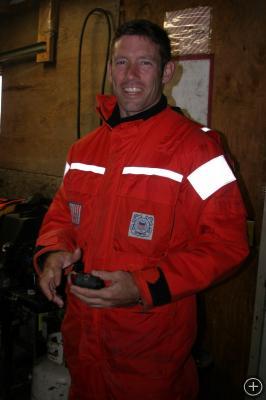
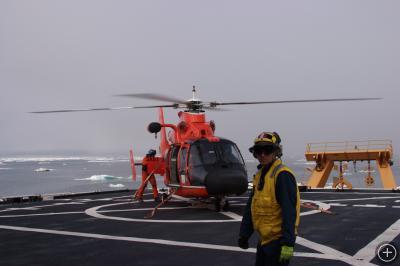
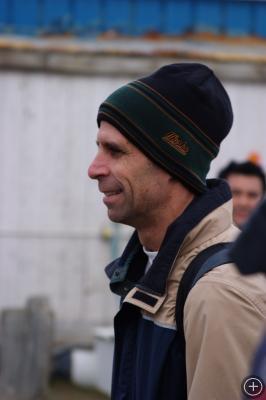
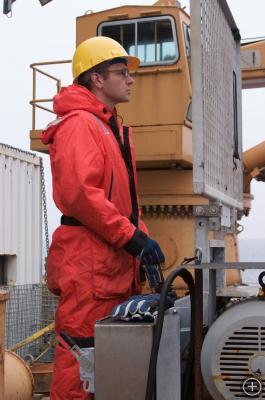
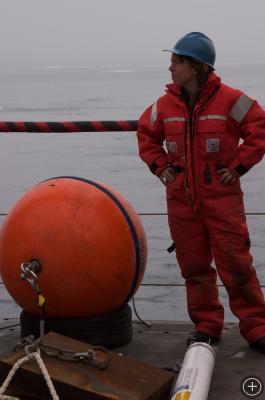
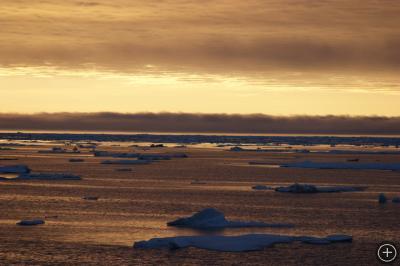

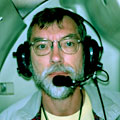

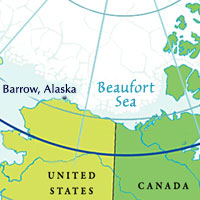





Great article! Awesome to see George’s name!